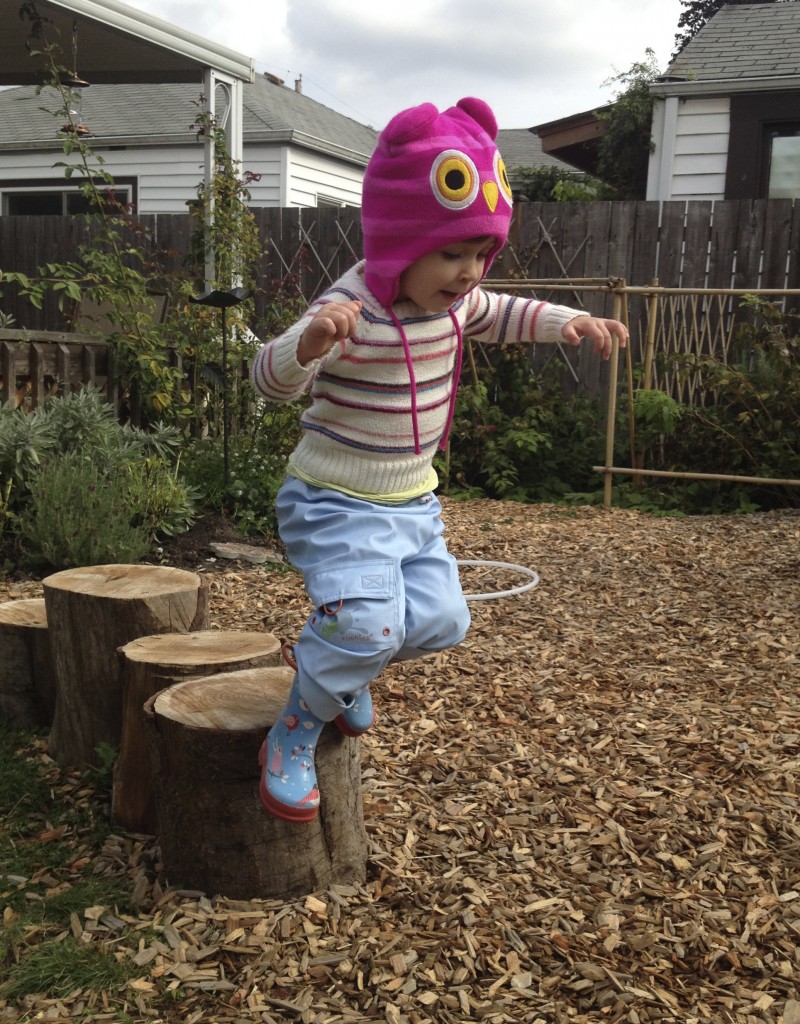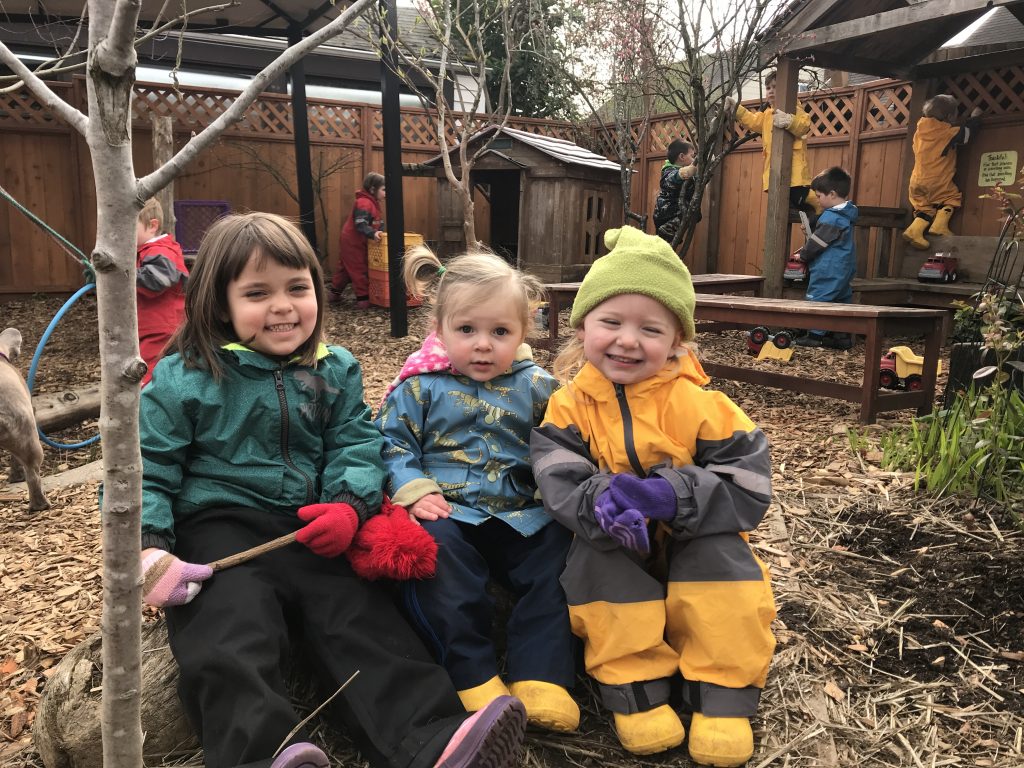The weather has been just beautiful – but it will begin to be chilly, especially early in the day when we head outside. If your child still needs a hat in their outdoor bag, please find one that can be left at preschool.
HATS, WARM SOCKS, TIGHTS, LONG-JOHNS…WOOL WOOL WOOL:)
“Warmth is probably one of the greatest gifts we can give our children, not only the warmth of love, but the physical warmth of their bodies. Children are developing their bodies especially during the first seven years of their lives. An infant or a young child will always feel warm, to the touch, unless they are on the verge of hypothermia because they have an accelerated metabolic rate. If we don’t provide them with the layers of cotton and wool to insulate their bodies, then they must use some of their potential “growth” energy to heat their bodies. This same energy would be better utilized in further developing their brain, heart, liver, lungs and other organs.” Susan Johnson, MD
“When speaking of how to dress a baby my pediatrician recommended putting one more layer on the baby then I put on myself. We so often see the opposite. Bundled parents and thinly clad babies and toddlers.”
Hats help prevent EAR INFECTIONS: “Keep air away from the ears… cool air flowing into the infected ear is often painful and many children choose to wear a head covering if their ear is infected such as a sock hat.”
“One issue is that young children do not have a fully developed sense for temperature – their own and that around them – until they are about 8 or 9 years old (yet another hallmark of the nine year change). Until then they are dependent on us to help them dress appropriately. And before someone gives up reading this in disgust, let me assure you all that as the mother of two hat-hating boys, I know that this is not easy. Ripping off the hat was an early acquired motor skill in both my sons – and many an outing was cut short because “if your hat isn’t on, we can’t stay at the park.”…
Warmth is one of the most important of the senses and one of the most critical gifts we can give our children is to ensure that they have sufficient warmth – both in terms of physical temperature and inner soul warmth (and of course, there is an important connection between the two). Many anthroposophical doctors speak in terms of a child’s body needing to be warm enough to properly receive the soul – and see a connection between insufficient warmth in some (not all!!) children and development of challenges in the autism spectrum.
An enormous amount of warmth leaves via the head – joggers know that and skiers know that and so though they may be scantily dressed as they grit their teeth and pursue their sport on frigid days, they will invariably wear hats. And yet on chilly days one can so often see hatted mothers carrying unhatted babies and children along! Why?!
So my advice is that no child under one year should ever be without a hat. The little silk/cotton blend hats are probably the best as silk is sensitive to temperature needs, keeping the child warm but not too warm. After a year, no hat inside is fine – but until that second birthday, the child should have a hat on most of the time – if not all – when out doors. After that, one can use one’s judgment – but err in favor of the child wearing a hat! And that means when the sun is strong – heads are incredibly delicate and a young child’s hair is no protection against the strong rays of the sun – even on cool days.”
http://christopherushomeschool.typepad.com/blog/2007/05/lets_hear_it_fo.html
“YOU AND YOUR CHILD’S HEALTH-Warmth by Susan R. Johnson MD…”
As a pediatrician, I actually was taught that you could tell if a baby or child was warm enough by touching their skin. If they felt warm then they were wearing enough clothes, and if they felt cool or their skin was mottled [bluish-pink], then they needed more clothes. It was simple. I was also a parent that had her 2 year-old child outside in the rain wearing only a diaper while playing in the puddles. I actually thought he was okay because he felt warm! Warmth is probably one of the greatest gifts we can give our children. Not only the warmth as love but the physical warmth of their body. Children are developing their bodies especially during the first 7 years of their lives. An infant and a young child will always feel warm unless they are on the verge of hypothermia because they have an accelerated metabolic rate. If we don’t provide them with the layers of cotton and wool to insulate their bodies, then they must use some of their potential “growth” energy to heat their bodies. This same energy would be better utilized in further developing their brain, heart, liver, lungs etc. In addition, being cold decreases our immunity. We are all more susceptible to the germs and viruses that are always around us when we are wet and cold. When our body has to expend extra energy to keep warm then less energy is available to “fight” off infections.
So the question becomes, how do we get our children to wear jackets? One can develop the habit of always having a child put on a hat and coat when they go outside during cool weather. One can also try telling the child that they will actually run faster and have much more energy to play if they wear a coat. If they don’t wear a coat then their body has to expend a lot of energy just warming up, and they will have less energy to build muscles and less energy to play. Finally, the type of clothing our children wear also makes a big difference. Polyester pajamas don’t breathe and children will often wake up sweating. Even polyester jackets will not insulate a child from the cold as well as layers of cotton, silk, or wool. When the child sweats while wearing polyester that sweat is trapped against their body and they eventually become chilled. So why do children rarely complain that they are cold? Children often are not connected with their bodies before the age of 7 to even acknowledge or communicate that they are cold. They live in the moment and are so excited and stimulated by all that they see that they don’t have the capacity to sense the coldness of their body. This is why children often will play in a swimming pool or ocean until they are literally “blue” denying that they are cold or that they need to come out of the water. So as parents, we have to help our children develop their sense of warmth. By helping them develop this sense of warmth, we are actually strengthening their immunity and laying the foundation for healthy bodies and healthy organs in their adult life.”
Edmond Schoorel writes in his book “The First Seven Years: The Physiology of Childhood” that “In the child, the warmth of the body is warmth of the head. In the lower pole, we have to look for the warmth of will. That has to do with an intentional, directed will that brings the child into a true relationship with his or her environment. It is obvious that infants do not have this yet. Most of their movements are chaotic and undirected. During infancy, each directed movement is connected to reflexes, such as aiming for the nipple, sucking, or swallowing.” Remember, sometimes nothing can calm a baby as a warm hat, warmth is important for good weight gain and for organization of the senses…Therefore, it is a good idea to keep your child’s head covered throughout the first year and to really watch the layers of clothing a child wears up until age 9 or so.”

